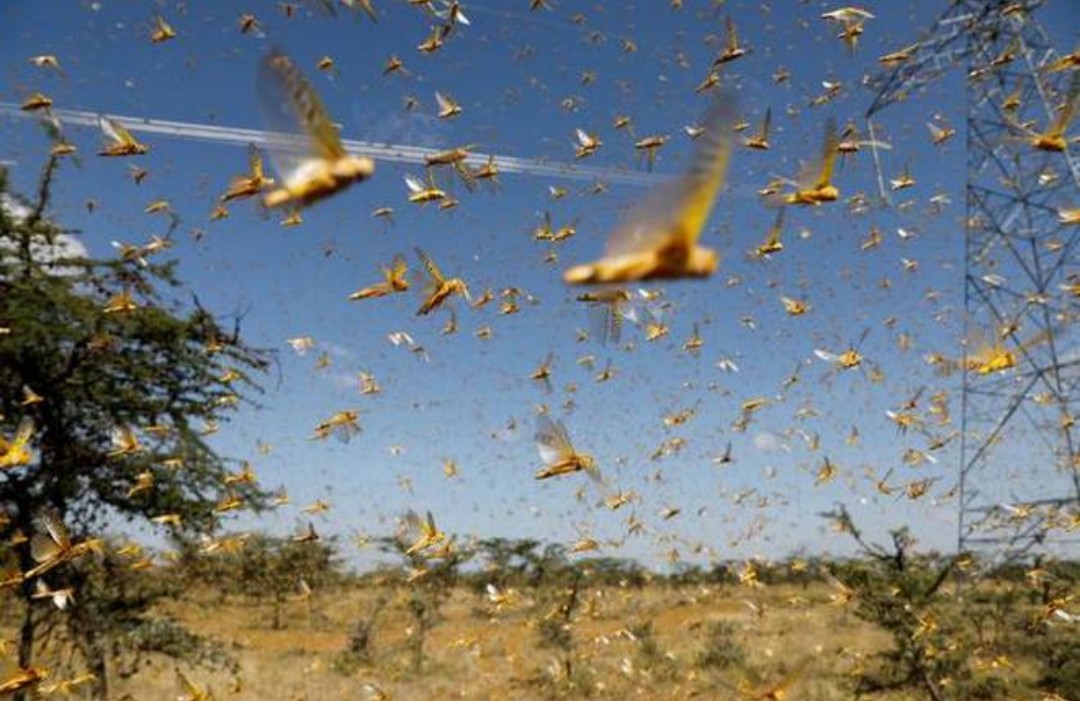In its situation update on Thursday, FAO said early migration of spring-bred locust swarms from southwest Pakistan to Rajasthan occurred in May before the monsoon, and some swarms travelled to northern states for the first time since 1962.
India might face another attack of crop-munching desert locusts in July, the Food and Agriculture Organization of United Nations (FAO) has warned amid an ongoing outbreak that has prompted the Centre to issue a warning to 16 states, including the worst-affected Rajasthan and Madhya Pradesh.
In its situation update on Thursday, FAO said early migration of spring-bred locust swarms from southwest Pakistan to Rajasthan occurred in May before the monsoon, and some swarms travelled to northern states for the first time since 1962.
While the swarms will oscillate east and westwards before returning to lay eggs with the onset of the monsoon in Rajasthan’s deserts, successive waves of swarms will arrive from southern Iran in June and the “Horn of Africa” peninsula in July, according to FAO.
According to experts, the swarms causing the present outbreak and chomping through vegetation across farmlands in Punjab, Madhya Pradesh, Maharashtra, Gujarat, Uttar Pradesh and Chhattisgarh entered India from Pakistan in April. The existing swarms too came from “Horn of Africa”.
“In East Africa, second-generation breeding is underway in northwest Kenya and numerous hopper bands have formed that will give rise to immature swarms from the second week of June until at least mid-July.
“A similar situation is underway in Somalia and Ethiopia. Most of the new swarms will migrate northwards from Kenya to Ethiopia and traverse South Sudan to Sudan after mid-June while other swarms will move to northern Ethiopia. Swarms that reach northeast Somalia are likely to migrate across the northern Indian Ocean to the Indo-Pakistan border area,” FAO said.
Locusts can fly up to 150km in a day and a one-square-kilometre swarm can eat as much food as 35,000 people.
KL Gurjar, the Indian government’s Locust Warning Organization (LWO), said many villages in Barmer and Jodhpur districts in Rajasthan continued witnessing locust attacks. Locusts have been controlled in 65,000-hectare area, he said, adding that there has been no new swarm of locusts for the last four days in the state.
“…some adult groups and swarms are expected to arrive in India from the spring-breeding areas (such as Iran and Pakistan). Therefore, vigilance will continue for expected invasion of locust in coming days,” he said.
LWO, a federal agency to monitor and control the gregarious pests, said Madhya Pradesh and Rajasthan are likely to see the use of helicopters to control the situation.
Drones, fire tenders and tractors have been already used to spray chemicals on locusts when they settle over trees at night. But since the problem is persisting and the kharif season is about to begin, the government is considering pulling out all the stops.
“We will use helicopters too to control locusts wherever these insects are moving in large numbers,” Gurjar said. “We are in the process (of getting the choppers for the same).”
Locust presence was seen in parts of Vindhya, Bundelkhand and Gwalior-Chambal regions of Madhya Pradesh on Friday. In Rajasthan, places such as Barmer, Pali, Jodhpur, Jalore, Nagaur and Bikaner reported locust swarms.
With inputs from Hindustan Times

